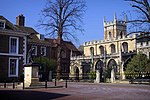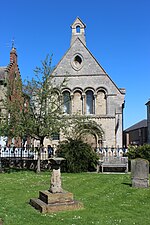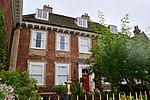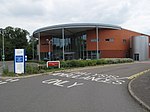Huntingdon railway station
DfT Category C2 stationsFormer Great Northern Railway stationsGrade II listed buildings in CambridgeshireHuntingdonPages with no open date in Infobox station ... and 4 more
Railway stations in CambridgeshireRailway stations in Great Britain opened in 1850Railway stations served by Govia Thameslink RailwayUse British English from May 2017

Huntingdon railway station (formerly known as Huntingdon North) serves the market town of Huntingdon in Cambridgeshire, England. It is on the East Coast Main Line, 58 miles 70 chains (58.88 miles, 94.75 km) from London King's Cross, and has three platforms: one bay and two through platforms. The station is managed by Great Northern, although most services are operated by Thameslink. During engineering works or periods of disruption London North Eastern Railway services sometimes call at Huntingdon, but there is no regular London North Eastern Railway service from the station.
Excerpt from the Wikipedia article Huntingdon railway station (License: CC BY-SA 3.0, Authors, Images).Huntingdon railway station
Taxi Pick Up and Set Down, Huntingdonshire Hinchingbrooke
Geographical coordinates (GPS) Address Nearby Places Show on map
Geographical coordinates (GPS)
| Latitude | Longitude |
|---|---|
| N 52.329 ° | E -0.192 ° |
Address
Taxi Pick Up and Set Down
PE29 3BP Huntingdonshire, Hinchingbrooke
England, United Kingdom
Open on Google Maps









